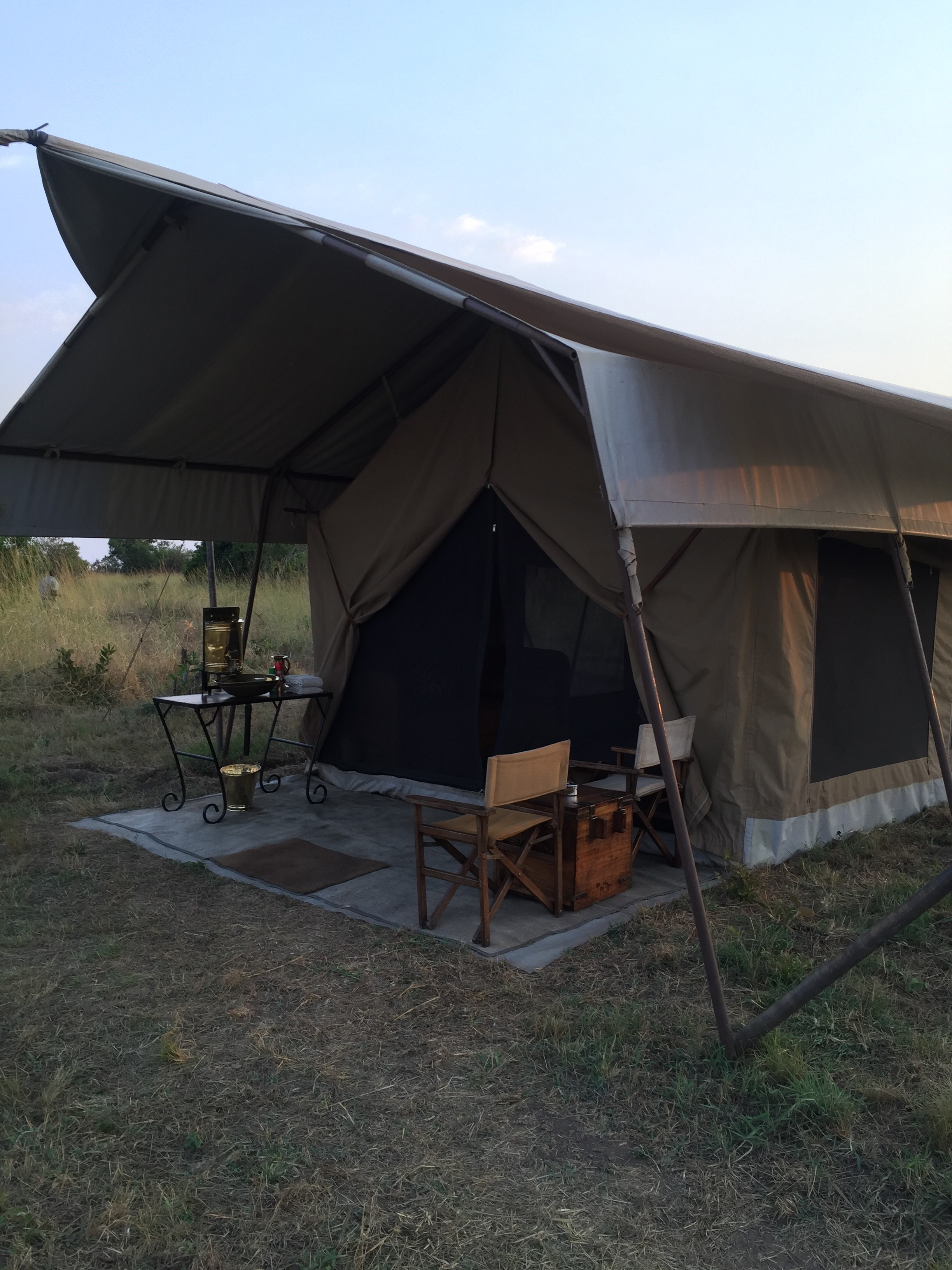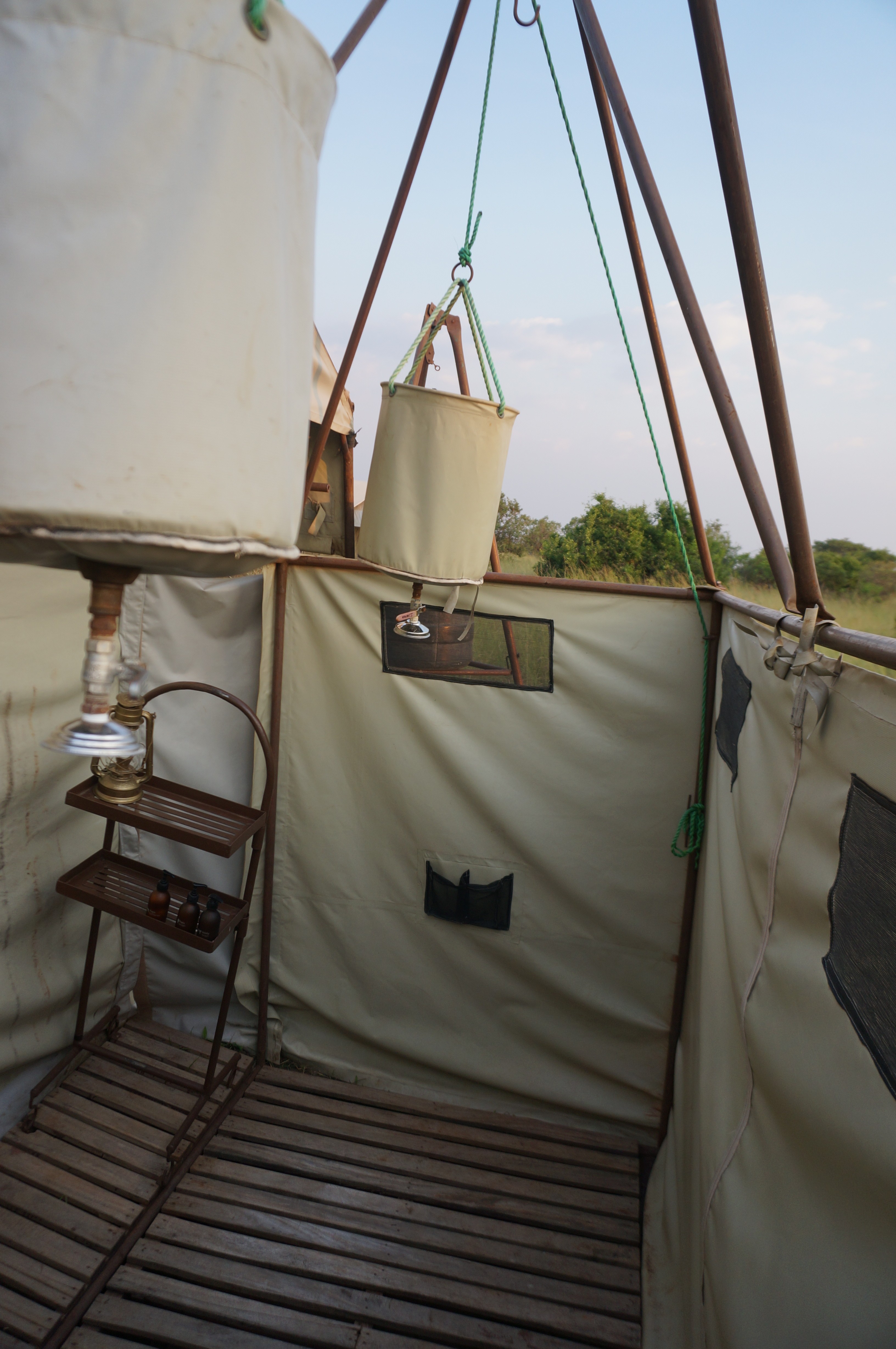After an amazing time in Masai Mara, we were ready to move to the adjacent Serengeti National Park. Theoretically, this would be an easy thing to do. However, Masai Mara is in Kenya and Serengeti is in Tanzania. Hence, we took a truck to get to an airfield that flew us to another airfield, where we picked up a vehicle that took us across the border (this border crossing is not likely to be nominated for any efficiency awards) and took us to the next airfield that flew us into North Serengeti. I would only note that the straight line distance between the two is probably no more than 60 miles and yet it took us about four hours to accomplish this multi-modal excursion.
Serengeti National Park is huge relative to the size of Masai Mara and it plays a key role in the Great Migration, going from South, to Central and West, to North and onwards to Masai Mara — all in search of the grasses and browse to sustain them. But this isn’t a one way trip — it’s actually a cycle that plays out over each year (a true moveable feast!). In fact, during our stay in the Serengeti, part of the herd was already returning from Masai Mara and we actually got to witness a second crossing. This time, we saw two wildebeest get caught in the current and drown. Needless to say, a crocodile was standing by for the free lunch. We did learn something interesting about the migration though. We had been curious about seeing the zebras and wildebeest mingling so closely during the migration and wondered why that might be. It turns out that the two animals have very complementary capabilities — the zebras have superior eyesight that can warn the herd of potential danger from predators. They tend to stay towards the front of the pack. The wildebeest on the other hand have an uncanny sense of smell and can smell water (or rain) from great distances which can be a great thing when you are trudging through arid landscapes. But it doesn’t end there. The zebras have specially designed mouths that allow them to eat the higher, greener, sharper grasses without getting cut up. This allows the wildebeest to follow behind and eat the remaining shorter, drier grasses. Nature always finds a way! I should mention an amazing story of the recovery of the wildebeest. Today there are around 1.3 million in the migrating herds. In the early 1960s, after the introduction of a virus into the Masai’s cattle herds, the wildebeest population had fallen below 200,000. The combination of some good veterinary work to eradicate the virus and a shift in rain patterns that allowed grasses to grow all year helped the wildebeest to rapidly recover.
We saw many of the same animals that we had in Masai Mara, including the long haul migratory animals (e.g., wildebeest, zebras, Thomson gazelles), the regional migratory animals (e.g., elephants, Cape buffalo, Topis, Grant gazelles), and resident animals (e.g., lions, giraffes, impalas, local antelope). We did see a few new animals. Of particular note is the Klipspringer, an antelope that lives in the rocks and outcroppings. They have rubber-like soles on their feet that allow them to sproing from rock to rock without falling and making them nearly impossible to catch by predators. They also have this cool spider web looking pattern inside their ears that makes them easy to identify. They also mate for life — a rare occurrence out here.


Unlike the Masai Mara, the Serengeti is loaded with flies, including the dreaded Tsetse fly (whose bite can cause sleeping sickness, although we were assured that the local ones don’t carry the parasite that causes the disease). This is where Deb came into her own. You see, she had been schlepping one of those tennis racket looking electronic bug zappers along for the entire trip, and until this moment, she hadn’t had any cause to use it. Now she was in heaven — thrusting, parrying, forehand, backhand and some unique ninja moves. At one point in our Land Cruiser, there was a burning smell in the air and the floor was littered with carcasses. In fact, she liked to sit outside our tent whacking away. Personally, I think she was taking too much glee in this…
I should note our accommodations since they were so unique. We stayed at Serengeti Under Canvas, a moveable camp that travels around the Serengeti with the schedule of the migration. There are no permanent fixtures — everything needs to be put up and torn down with each move. We stayed in tents that still found a way to be luxurious with comfortable beds, flush toilets (I never did figure out where the “black water” went), and bucket showers. They also had tents set up for dining and a bar/lounge. The staff were fantastic and the chef turned out some amazing meals, considering he only had charcoal fires and a small cook stove to work with! What was a little intimidating, however, was the fact that we were right in the bush — no fences or other protection to keep animals out. We were told to stay in our tents at night and not dare venture out. We had an air horn we could use if any emergency arose. Having learned the sounds the animals make while on our safari, I can tell you that we were visited by wildebeest, zebras, hyenas, a leopard, and some people said at least one lion. It was a little freaky knowing that only a little bit of canvas separating us from them!
It was here at Serengeti that our plans changed. We were due to go to three more safari camps before heading home, but after two weeks of pounding around through the bush in our Land Cruisers, my back said enough! Consequently, we parted company with our friends and made plans to go the the island archipelago of Zanzibar. Time for the beach, chilling out, and reflection.














